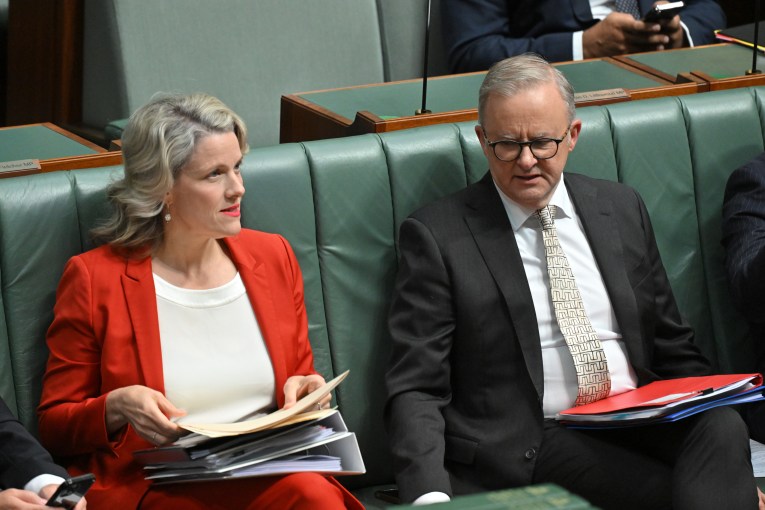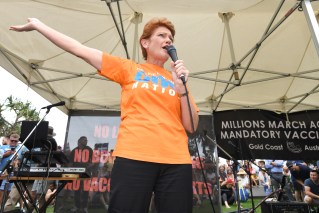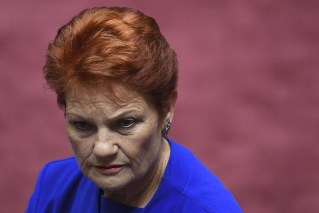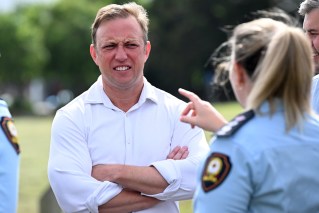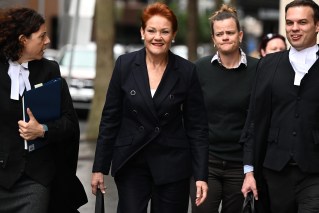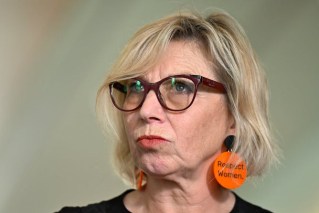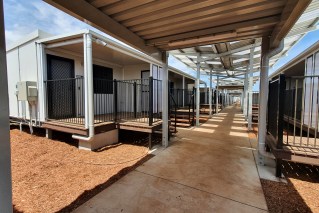The worst campaign of all time – why the Porsche and Lambo drivers never stood a chance
The Yes team ran the worst campaign ever, says Dennis Atkins, It also explains, in part why in Brisbane’s inner north, Porsche and Lamborghini drivers vote Yes while those in Bentleys and Range Rovers trend No.
It hel

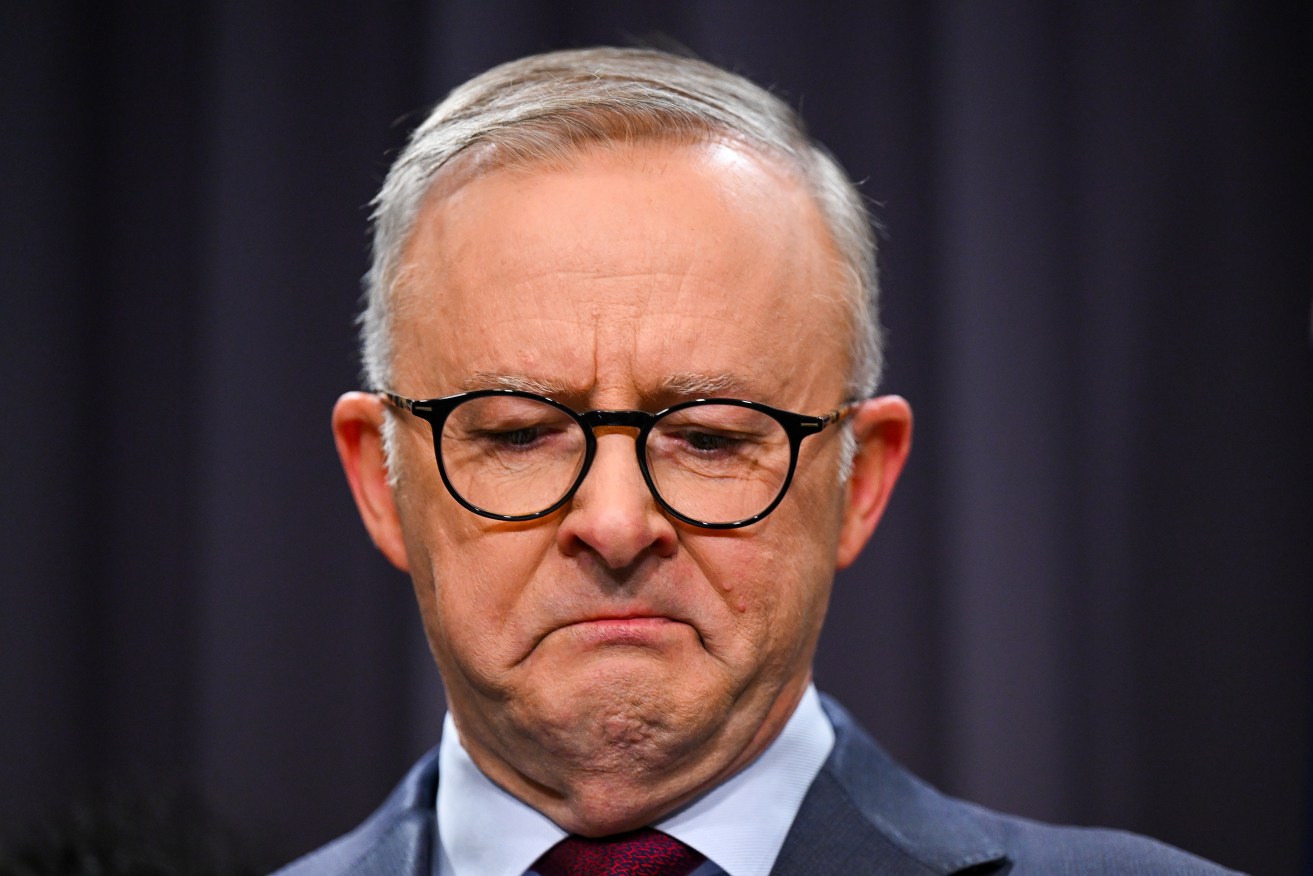
Australian Prime Minister Anthony Albanese surrounded by members of the First Nations Referendum Working Group gets emotional as he speaks to the media during a press conference. The failure of the referendum is just one of the things that clouded his year. (AAP Image/Lukas Coch)
There was only one surprise in the end. To see people still forecasting a victory for the Yes vote in the Voice to Parliament referendum in the last week – indeed over the final 24 hours – justified sharply raised eyebrows.
This result was so certain the seven Expedition 70 astronauts on the International Space Station could have seen it as they flew over Australia just after 7pm last Friday.
For many canny political observers, the outcome was clear as long ago as this time last year. By the middle of 2023, the margin of victory echoed the mighty Vo Rogue’s half of the straight win in the 1988 Blamey Stakes at Flemington. They don’t call it horse race political journalism for nothing.
How it happened and where it happened were also unsurprising. The “where it happened” was mostly beyond predictable. The maps for pro Voice votes replicated the support for a republic a quarter of a century ago – inner city, high income, high education levels, progressive values were persistent determinants.
However, an emerging trend is also there – one which rhymes with those Greens and teal gains at the last federal poll.
Voters described as “new money” are inflating the centre left vote in inner metro seats and that trend could be expanding.
The 2022 election saw the Greens gather up Brisbane, Ryan and Griffith (the first two from the LNP, the other from Labor), the strong Yes vote expanded to exceed 50 percent not just in those three electorates but came very close in inner north Lilley and in Moreton, south of Griffith.
Any thought Dutton might have had of targeting those seats will need a rethink, especially Moreton.
An aside on the new and old money equation: Brisbane centered on and just to the north of the CBD is the most affluent electorate in the state but while its pockets of new money (think Porsches and Lamborghinis) around New Farm and Teneriffe went strongly for Yes (two to one in favour), the old money (Bentleys and Range Rovers), around the bend of the Brisbane River, in the Hamilton, Ascot and Clayfield suburbs, was just as emphatically for No.
As to why, it’s not rocket surgery, This columnist has argued for months, the government – led by prime minister Anthony Albanese – and the formal Yes campaign left the field of argument and persuasion wide open for the opposition.
By the time Liberal leader Peter Dutton planted his No flag in the ground the soil had been contaminated with doubt, questioning and more fake news than you’d find in a Russian bot-farm.
The resounding three to two loss for the Yes vote, going down in every state and a preponderance of federal electorates, is an emphatic moment for the country but the way the campaign for change was conducted suggests such an outcome might never be realised.
There will be moves, either publicly or behind the scenes, for a post mortem, as there was after the failed 1999 republic referendum. There wasn’t a formal inquiry but a later paper by the esteemed Australian Election Study at the ANU did as good a job as anything else.
That study, co-authored by Professor Ian McAllister, was titled “Elite division and voter confusion” which not only said it all but could be a working title for a look at this attempt to change the constitution.
Meanwhile, a study of the failure should be told to look forward not back.
We know this was close to the worst election or referendum campaign ever, with the YesHQ top heavy with consultants and insiders, seemingly incapable of agility. When there was pressure on, they reverted to the dumb tactic of “if you see a nail, hit it with a hammer”.
The problem in the context of the voice question was Dutton could always produce a bigger hammer and hit any nail harder.
The self obsession of the YesHQ crowd is on display again today with these well paid insiders saying they weren’t the problem, it was Albanese and Labor.
As much as the prime minister needs to shoulder criticism for his behaviour and judgment, the real crimes against campaigning were committed by those running the official pro-change case.
It wasn’t until the final few weeks that YesHQ advertising hit the spot with messages about the disadvantages of young indigenous people, saying they might get a better chance if the country voted in favour of change.
The “game changing” ad featuring John Farnham and his 35-year old song You’re The Voice was a gimmicky flop that got the staff room and hipster cafe crowd excited but painted faces blank beyond a $35 Uber ride.
What is needed, if it’s possible, is a genuine path to reconciliation. The public might want to reconcile the country’s history and its treatment of First Nations peoples but it’s a hard row to hoe.
Just think of the United States. They had a civil war, a century of black voter suppression, constitutional change to “guarantee” protections for basic freedoms and a plethora of civil rights laws but they are still short of true reconciliation.
Perhaps the most distressing thing from this exercise was the outburst of complaint after the loss became apparent and then a reality.
It was all the fault of a misinformation campaign, the Yes side claimed.
This was insulting and, as pollster Kos Samaras said on Sunday, riddled with class prejudice.
It equated voters with stupidity and gullibility. Samaras agreed with my suggestion this was not unlike former US presidential candidate Hillary Clinton’s fatal description of Donald Trump supporters as “deplorables”.
Samaras suggests putting people in a campaign for reconciliation based on shared understanding of the plight and the values of people like Aboriginal and Torres Strait Islanders. This would unite the economic circumstance of people in the outer suburbs and First Nations people.
“They work longer hours, for less pay versus those taunting them,” says Samaras. “They live shorter lives than those taunting them. They suffer from far more health issues than those taunting them.
“They suffer from higher rates of mental health, workplace acquired injuries than those taunting them.
“The Yes campaign could have merged the two common experiences between First Nations people and working class people. But it never wanted class to be part of the campaign.”
Samaras is right: class was the missing middle of the Yes campaign and it was the dog whistle of the No campaign. The latter worked because the former wasn’t smart enough to realise what was happening.
